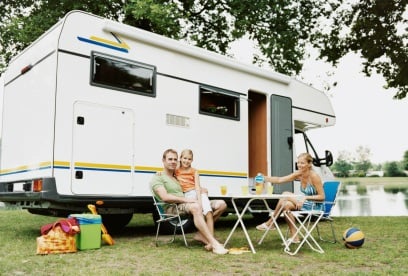Many people own and require insurance for vehicles that are not typical private passenger automobiles, but are not commercial vehicles either. The Insurance Services Office (ISO) Personal Vehicle Manual contains rules (rule 19) and forms (PP 03 23 for most; PP 03 20 for snowmobiles) defining these vehicles for coverage purposes. Of course, while ISO sets a standard, individual insurers may deviate from it.
|Motor Homes
 The ISO rules manual says that a motor home is a self-propelled motor vehicle equipped with a “living area that is an integral part of the vehicle chassis.” A motor home typically has plumbing, as well as facilities for cooking, refrigeration, dining, and sleeping.
The ISO rules manual says that a motor home is a self-propelled motor vehicle equipped with a “living area that is an integral part of the vehicle chassis.” A motor home typically has plumbing, as well as facilities for cooking, refrigeration, dining, and sleeping.
A motor home that the insured drives to work or in business is rated—for liability coverage—as a private passenger automobile. A pleasure use motor home receives a 50 percent reduction from the standard private passenger auto rates for liability, medical payments/no-fault, and uninsured/underinsured motorists coverages.
In order to rate physical damage coverage, the agent and insured must arrive at a stated amount of coverage. In order to properly rate physical damage coverage, a symbol is assigned. The ISO Symbol Manual provides a chart for converting a dollar amount to a symbol. Symbols are based on both the cost new of the vehicle and a particular car’s damageability. Again, any motor home that the insured drives to work or in business is rated like a private passenger auto. For a pleasure use motor home, the physical damage rate is 35 percent that of a private passenger auto.
Recommended For You
Want to continue reading?
Become a Free PropertyCasualty360 Digital Reader
Your access to unlimited PropertyCasualty360 content isn’t changing.
Once you are an ALM digital member, you’ll receive:
- Breaking insurance news and analysis, on-site and via our newsletters and custom alerts
- Weekly Insurance Speak podcast featuring exclusive interviews with industry leaders
- Educational webcasts, white papers, and ebooks from industry thought leaders
- Critical converage of the employee benefits and financial advisory markets on our other ALM sites, BenefitsPRO and ThinkAdvisor
Already have an account? Sign In Now
© Touchpoint Markets, All Rights Reserved. Request academic re-use from www.copyright.com. All other uses, submit a request to [email protected]. For more inforrmation visit Asset & Logo Licensing.







